News Updates
NEWS CENTER
Related News
There is currently no data available
The State Council Information Office held a press conference on the development of intellectual property rights in China in 2022
Release Time:
2023-04-24
State Intellectual Property Office: The invention patent review cycle has been reduced to 16.5 months, and the average trademark registration review cycle has stabilized within 4 months. Strictly crack down on malicious registration of trademarks,
The State Council Information Office held a press conference on April 24, 2023, inviting Shen Changyu, Director of the State Intellectual Property Office, Hu Wenhui, Deputy Director of the State Intellectual Property Office, and Wang Zhicheng, Director of the Copyright Administration Bureau of the Central Propaganda Department to introduce the development status of China's intellectual property in 2022 and answer questions. the reporter asked.
Picture and text records
Xing Huina, deputy director and spokesperson of the Information Bureau of the State Council Information Office:
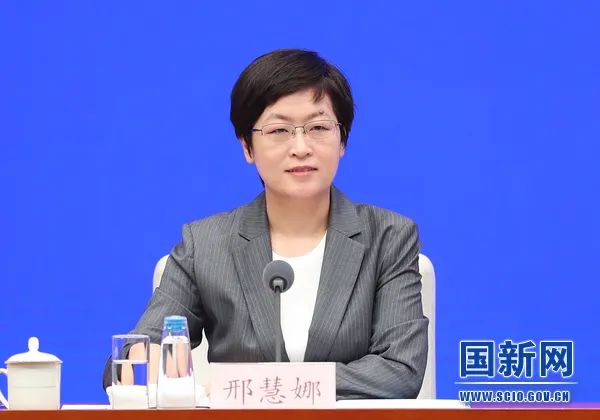
Xing Huina (Photo by Luan Haijun)
Ladies and gentlemen, good morning. Welcome to the press conference of the State Council Information Office. At today's press conference, we invited Mr. Shen Changyu, Director of the State Intellectual Property Office, to introduce to you the development status of China's intellectual property in 2022 and answer questions that everyone is concerned about. Also present at the press conference were Mr. Hu Wenhui, Deputy Director of the State Intellectual Property Office, and Mr. Wang Zhicheng, Director of the Copyright Administration Bureau of the Propaganda Department of the CPC Central Committee.
Next, I would like to invite Mr. Shen Changyu to introduce the situation.
Shen Changyu, Director of the State Intellectual Property Office:
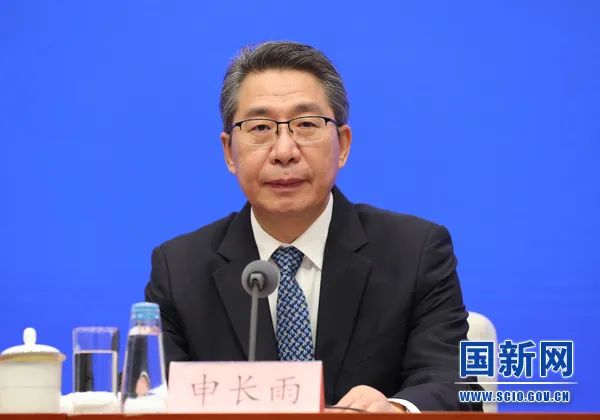
Shen Changyu (photo by Xu Xiang)
Thank you, host, and friends from the news media. First of all, thank you for your concern, attention and support for intellectual property work over the years.
This year is the first year to fully implement the spirit of the 20th National Congress of the Communist Party of China. The report of the 20th National Congress of the Communist Party of China emphasized "strengthening the legal protection of intellectual property rights and forming a basic system that supports comprehensive innovation"; "improving the basic market economy systems such as property rights protection, market access, fair competition, and social credit, and optimizing the business environment"; " "Protecting the rights and interests of foreign investors in accordance with the law and creating a market-oriented, legal and international first-class business environment" have pointed out the way forward and provided fundamental guidelines for the development of intellectual property rights in the new era.
Intellectual property related departments adhere to the guidance of Xi Jinping Thought on Socialism with Chinese Characteristics for a New Era, thoroughly study and implement the spirit of the 20th National Congress of the Communist Party of China, conscientiously implement General Secretary Xi Jinping’s important instructions on intellectual property work and the decisions and arrangements of the Party Central Committee and the State Council, and deeply understand The decisive significance of the "two establishments" is to strengthen the "four consciousnesses", strengthen the "four self-confidences", and achieve "two maintenances", thoroughly implement the outline of building a powerful country in intellectual property and the "14th Five-Year Plan", and further consolidate intellectual property rights. Based on the rule of law, it effectively serves innovation-driven development, effectively promotes high-level opening up to the outside world, better helps optimize the business environment, and takes new solid steps in building a strong country with intellectual property rights.
First, the quality of intellectual property creation has been steadily improved. In 2022, 798,000 invention patents will be authorized, and the number of high-value invention patents per 10,000 people will reach 9.4. Chinese applicants submitted 70,000 international patent applications through the Patent Cooperation Treaty (PCT) and 2,558 design applications through the Hague Agreement on the International Registration of Industrial Designs. 6.177 million registered trademarks were approved, and 5,827 Madrid trademark international registration applications were received from domestic applicants. Five new geographical indication protected products were recognized, and 514 newly registered geographical indications were approved as collective trademarks and certification trademarks. The number of copyright registrations for works and computer software reached 4.517 million and 1.835 million respectively. 4,026 new plant variety rights were granted. 9,106 integrated circuit layout designs were issued. my country's ranking increased to 11th in the world in the "2022 Global Innovation Index Report" released by the World Intellectual Property Organization.
Second, the protection of intellectual property rights has been continuously strengthened. The newly revised Anti-Monopoly Law, Science and Technology Progress Law, and Seed Law were officially implemented. Research on data intellectual property protection rules and local pilot projects are progressing in an orderly manner. The intellectual property protection tasks for the Winter Olympics and Winter Paralympics were successfully completed. Select the first batch of national intellectual property protection demonstration zones. The review cycle for invention patents has been reduced to 16.5 months, and the average review cycle for trademark registrations has remained stable at 4 months. 10 new national-level intellectual property protection centers and rapid rights protection centers will be established. 44,000 illegal cases in the fields of patents and trademarks were investigated and handled. It handled 58,000 administrative adjudication cases of patent infringement disputes, handled 71,000 applications for rights protection assistance, and accepted 88,000 dispute mediation cases. 3,378 cases of infringement and piracy were investigated, 846,000 infringement and piracy links were deleted, and 3,029 large websites were under key copyright supervision. 61,000 batches of imported and exported goods suspected of infringement were detained, and 21,000 new customs protection filings for intellectual property rights were reviewed. 543,000 intellectual property cases of various types were concluded. 13,000 people were prosecuted for intellectual property infringement crimes, and 937 intellectual property civil litigation and supervision cases were handled. 27,000 criminal cases of infringement of intellectual property rights and production and sale of counterfeit goods were detected. Social satisfaction with intellectual property protection further improved to 81.25 points.
Third, the benefits of using intellectual property rights are more prominent. The added value of patent-intensive industries reached 14.3 trillion yuan (2021 value), a year-on-year increase of 17.9%, accounting for 12.44% of GDP. The added value of the copyright industry reached 8.48 trillion yuan (2021 value), a year-on-year increase of 12.9%, accounting for 7.41% of GDP. The total amount of patent and trademark pledge financing in 2022 will reach 486.88 billion yuan, a year-on-year increase of 57.1%. The amount of copyright pledge guarantee reached 5.45 billion yuan, a year-on-year increase of 25.9%. The total import and export volume of intellectual property royalties reached 387.25 billion yuan, a year-on-year increase of 2.4%, of which the export volume increased by 17% year-on-year. A total of 241,000 technology contracts involving intellectual property rights were signed, with a transaction volume of 1.8 trillion yuan. 33 intellectual property asset securitization products were issued, with an issuance scale of 6.2 billion yuan. There are more than 23,000 market entities using special signs for geographical indications, and the annual direct product output value exceeds 700 billion yuan.
Fourth, intellectual property service capabilities continue to improve. Effectively implemented the 15 intellectual property reform tasks of the State Council's business environment innovation pilot, the patent and trademark electronic application rate exceeded 99%, and the certificates were electronic. The China Copyright Protection Center has implemented comprehensive online processing of copyright registration of works. Intellectual property public service agencies have achieved full coverage at the provincial level, and the coverage rate of comprehensive public service agencies at the prefectural and municipal levels exceeds 40%. 11 new types of intellectual property data have been opened to the public, basically realizing "opening up as much as possible", and the number of standardized data types allocated to local service outlets has increased to 53. National copyright pledge registration information can be queried in a unified manner. The supervision of the intellectual property service industry continues to strengthen, and the industry order continues to improve. Intellectual property service agencies across the country employ more than 928,000 people, with total operating income reaching 260 billion yuan.
Fifth, international cooperation and competition in intellectual property rights have been carried out in depth. Joined the Hague Agreement on the International Registration of Industrial Designs, ratified the Marrakesh Treaty on Facilitating Access to Published Works for Blind, Visually Impaired or Other Print Disabled Persons, and officially entered into force in our country. The Chinese representative was elected as the Chairman of the Council of the International Union for the Protection of New Varieties of Plants. High-quality implementation of the intellectual property-related content of the Regional Comprehensive Economic Partnership Agreement (RCEP). Cooperate with the World Intellectual Property Organization to prepare a national report on intellectual property finance and a research report on outstanding case demonstration sites for copyright protection. The list of the second batch of 350 products for mutual recognition and mutual protection of geographical indication products between China and Europe has been announced. Strengthen the management of external transfers of intellectual property rights involving national security, provide guidance on the response to overseas intellectual property disputes, and effectively safeguard national security in the field of intellectual property and the legitimate interests of overseas intellectual property rights of Chinese enterprises.
The above is the relevant situation of building an intellectual property power in 2022. We would like to answer your questions below on the relevant content. thank you all.
Xing Huina:
Now, please ask your questions. Please inform your news organization before asking.
CCTV reporter from China Central Radio and Television Station:
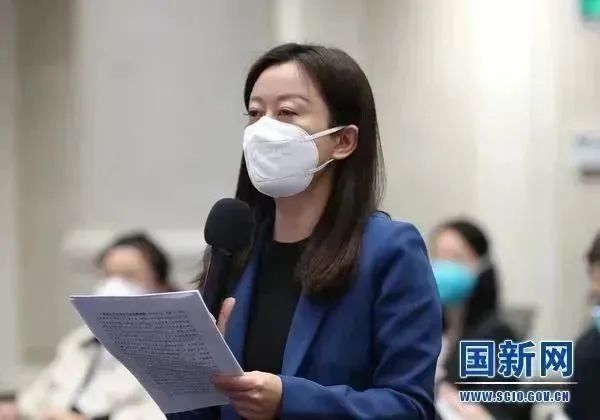
Questions from reporters from China Central Radio and Television (Photo by Liu Jian)
The 20th National Congress of the Communist Party of China and the Second Plenary Session of the 20th Central Committee of the Communist Party of China made new arrangements for intellectual property work. We want to know how to create a new situation for the development of intellectual property at a new starting point and a new journey? Thanks.
Shen Changyu:
Thank you for your question. It's up to me to answer this question.
The 20th National Congress of the Communist Party of China held in October last year systematically outlined a grand blueprint for the development of the party and the country's undertakings in the future period. It also made new arrangements for intellectual property work, emphasizing the need to strengthen the legal protection of intellectual property rights and form a support system for comprehensive innovation. basic system. The "Party and State Institutional Reform Plan" reviewed and approved by the Second Plenary Session of the 20th Central Committee of the Communist Party of China made new major optimization adjustments to improve the intellectual property management system, and adjusted the State Intellectual Property Office to an agency directly under the State Council. These fully reflect the great importance that the Party Central Committee with Comrade Xi Jinping at the core attaches to intellectual property work.
On a new starting point and a new journey, we will thoroughly study and implement the spirit of General Secretary Xi Jinping’s important instructions on intellectual property work, deeply understand the new deployment of intellectual property work at the Second Plenary Session of the 20th CPC Central Committee, consciously think in the overall situation, and under the overall situation Take action and focus on the following four aspects.
The first is to better support technological innovation. Innovation is the first driving force for development, and protecting intellectual property rights is protecting innovation. We will rely on intellectual property as a "rigid need" for innovation-driven development, vigorously strengthen the legal protection of intellectual property, promote the formation of a basic system that supports comprehensive innovation, better support key core technology research, and promote the patent chain, innovation chain, industrial chain, and capital chain. , deep integration of talent chains to help achieve high-level technological self-reliance and self-reliance.
The second is to speed up the transformation and application of patents. Intellectual property protection work relationship develops with high quality. We will increase the intensity of patent conversion and application, improve the design of relevant systems, promote high-level innovation, deepen the reform of the distribution of intellectual property rights, accelerate the implementation of the patent open licensing system, improve the market-oriented mechanism for patent conversion and application, and promote the efficient allocation and orderly flow of innovation resources. , strive to transform innovation advantages into high-quality development advantages.
The third is to better support high-level opening up. Intellectual property protection is related to the country’s overall opening to the outside world. We will focus on intellectual property rights as the "standard configuration" of international trade, actively align with high-standard international economic and trade rules, deeply participate in global intellectual property governance, solidly promote multilateral and bilateral intellectual property cooperation, promote international economic, trade, scientific and cultural exchanges, and promote the construction of an open economy. New system.
The fourth is to better help optimize the business environment. Property rights protection, especially intellectual property protection, is an important aspect in creating a good business environment. We will equally protect the intellectual property rights of all market entities in accordance with the law, resolutely punish illegal acts of intellectual property infringement, regulate the abuse of intellectual property rights, help create a market-oriented, legal and international first-class business environment, and promote the construction of a high-standard market system.
On a new starting point and a new journey, we will thoroughly study and implement Xi Jinping Thought on Socialism with Chinese Characteristics for a New Era, work hand in hand with all sectors of society, unswervingly follow the path of intellectual property development with Chinese characteristics, and better leverage the dual supply of intellectual property system and technology supply. role, accelerate the construction of an intellectual property power with Chinese characteristics and world-class standards, strive to make progress from the beginning, and strive to start a new journey, so as to provide strong support for the comprehensive construction of a modern socialist country. Thanks.
Southern Metropolis Daily reporter:
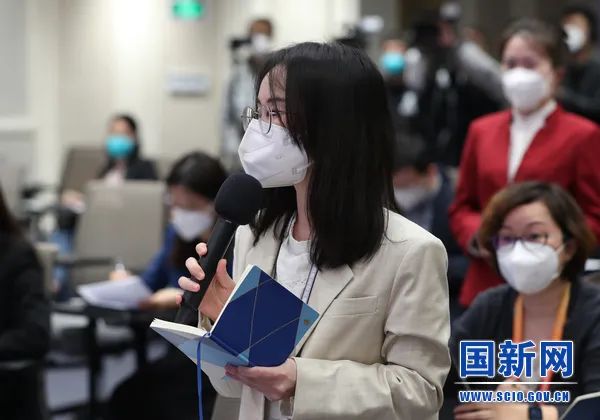
Southern Metropolis Daily reporter asked questions (Photo by Liu Jian)
It is understood that with the approval of the State Council, the State Intellectual Property Office, together with relevant departments, has launched the selection of the first batch of national intellectual property protection demonstration zones. Please briefly introduce the significance of the construction of protection demonstration zones and the current progress of the construction of the first batch of demonstration zones. Thanks.
Hu Wenhui, Deputy Director of the State Intellectual Property Office:
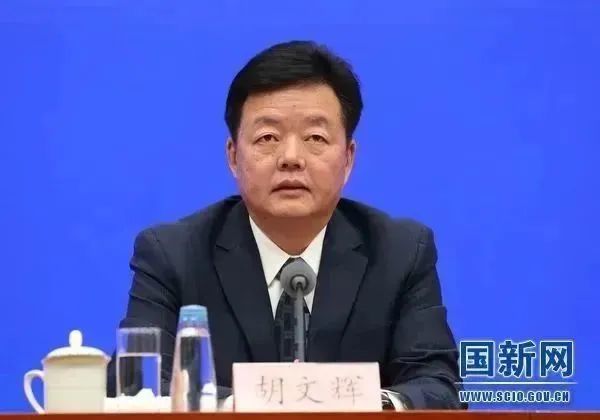
Hu Wenhui (photo by Xu Xiang)
Thank you for your question. Carrying out the construction of national intellectual property protection demonstration zones is an important measure to implement the decisions and arrangements of the Party Central Committee and the State Council on comprehensively strengthening intellectual property protection. It is also an important measure to create a market-oriented, legal and international first-class business environment. The construction of high-standard and high-level intellectual property protection demonstration zones will help to improve the overall level of intellectual property protection in my country, further optimize the business environment and innovation environment, stimulate the innovation vitality of the whole society, and support high-quality development.
Since the selection of the first batch of demonstration zones was launched, the State Intellectual Property Office, in conjunction with the Supreme People's Court, the Supreme People's Procuratorate, the Ministry of Industry and Information Technology, the General Administration of Customs, the State Administration for Market Regulation and the China Council for the Promotion of International Trade, a total of 7 departments recommended 64 cities (regions). Among them, Tianjin Binhai New Area, Shanghai Pudong New Area, Nanjing City and Suzhou City in Jiangsu Province, Hangzhou City and Ningbo City in Zhejiang Province, Hefei City in Anhui Province, Guangzhou City and Shenzhen City in Guangdong Province, and Chengdu City in Sichuan Province, a total of 10 cities (regions) to carry out construction. Overall, the above-mentioned cities (regions) are boldly innovating and adapting to local conditions in exploring institutional innovation, weaving dense protection networks, innovating supervision models, deepening law enforcement collaboration, and strengthening risk prevention and control, striving to become experimental fields for innovative measures in intellectual property protection.
In order to strengthen policy support, seven departments including the State Intellectual Property Office jointly studied a list of more than 20 support policies for demonstration zones, including supporting the construction of a rapid collaborative protection system for intellectual property rights, supporting the establishment of contact points for intellectual property prosecution work, and case handling points for intellectual property trial work. , support the centralized review of patent applications, support the establishment of "through trains" for administrative adjudication of major patent infringement disputes, etc., and continue to enrich relevant support policies, encourage demonstration areas to take the lead in trials, take steps, and boldly innovate.
In the next step, we will follow the overall plan of the "National Intellectual Property Protection Demonstration Zone Construction Plan" to strengthen the guidance for the construction of the first batch of demonstration zones, establish a "progress and retreat" working mechanism, dynamically control the effects of demonstration creation, and summarize in a timely manner Extract useful experiences and effective practices, promote their replication and promotion nationwide, and drive the overall improvement of national intellectual property protection capabilities and levels. Thanks.
People's Daily reporter:

Questions from People’s Daily reporters (Photo by Liu Jian)
This year is the first year to fully implement the spirit of the 20th National Congress of the Communist Party of China. On the new journey of promoting the construction of a strong country with Chinese-style modernization, copyright, as an important basic system that encourages innovation and serves the market, plays an important role in economic and social development. The role gradually becomes apparent. I would like to ask how copyright work specifically implements the spirit of the 20th National Congress of the Communist Party of China. Thanks.
Shen Changyu:
Thank you for your question. I would like to ask Director Wang from the Copyright Administration Bureau to answer this question.
Wang Zhicheng, director of the Copyright Administration Bureau of the Propaganda Department of the CPC Central Committee:

Wang Zhicheng (photo by Xu Xiang)
The 20th National Congress of the Communist Party of China clearly stated that “strengthening the legal protection of intellectual property rights and forming a basic system to support comprehensive innovation”. In 2023, copyright work will be guided by Xi Jinping Thought on Socialism with Chinese Characteristics for a New Era, implement the spirit of the 20th National Congress of the Communist Party of China, strive for progress while maintaining stability, keep integrity and innovate, promote the modernization of the copyright governance system and governance capabilities, and implement the innovation-driven development strategy and Contribute to building a socialist cultural power.
First, improve the copyright legal system. Accelerate the formulation and revision of supporting regulations such as the "Regulations for the Implementation of the Copyright Law of the People's Republic of China", the "Regulations on the Collective Management of Copyright" and the "Regulations on the Protection of Copyright of Folk Literature and Artistic Works", and accelerate the advancement of the "Implementation Measures for Copyright Administrative Penalties" and the "Trial Implementation of Voluntary Registration of Works" Regulations and normative documents such as the Measures have been revised and improved. Strengthen the construction of the copyright administrative law enforcement guidance system, and study and formulate copyright protection policies and measures for new fields and new business formats.
The second is to strengthen copyright protection. Carry out the "Sword Net 2023" special action to combat online infringement and piracy, the youth copyright protection season action, special rectification of book piracy, special rectification of pirated recordings and dissemination of theater movies, etc., strengthen key copyright supervision of major network service providers and new media formats, and strengthen The two laws should be connected to improve the diversified resolution mechanism for copyright disputes. Study and formulate the Guiding Opinions on Copyright Administrative Law Enforcement, and establish and improve unified and coordinated copyright administrative law enforcement standards, evidence rules, case guidance systems, and supervision and reward mechanisms. Further improve the long-term mechanism for software legalization, carry out in-depth annual verification of software legalization, and continue to consolidate the results of software legalization work for government agencies, enterprises, banks, insurance and securities and futures industry institutions.
The third is to promote industrial development. Rationalize and improve the copyright registration system, strengthen guidance and supervision of copyright collective management organizations, and strengthen supervision of the representative offices of overseas copyright certification agencies in China. Continue to carry out national copyright demonstration and creation work, study and formulate the "Guiding Opinions on Promoting High-Quality Development of the Copyright Industry", continuously improve the national copyright exhibition authorization transaction system, guide the professional construction of the National Copyright Trading Center (trade base), standardize copyright assessment, copyright transactions, Copyright financing, monitoring and rights protection, copyright consultation and other activities are carried out.
The fourth is to strengthen international exchanges. Actively participate in the formulation of international copyright rules, further strengthen good cooperation with international organizations such as the World Intellectual Property Organization, do a good job in the implementation of relevant international copyright treaties, build an international risk prevention and control system for the copyright industry, and continue to carry out pilot projects for the protection and promotion of folk literature and art copyrights. work, strengthen the training of copyright international talents, organize and build an international copyright expert think tank, and provide intellectual support for improving copyright international work.
The fifth is to enhance social awareness. Take publicity and implementation of the spirit of the 20th National Congress of the Communist Party of China as the focus of copyright publicity work, closely follow copyright key points and hot events, organize important activities, combine key tasks, innovate publicity methods, improve publicity effects, and carry out "China's Copyright Good Stories" For external communication work, we will cooperate with the publicity work for the 50th anniversary of cooperation between China and the World Intellectual Property Organization, organize special copyright training, and continue to conduct investigations and research to provide support for the high-quality development of copyright work.
Thanks.
China Daily reporter:
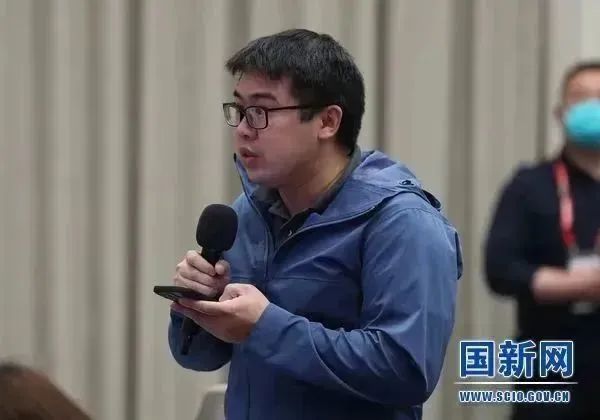
China Daily reporter asked questions (Photo by Liu Jian)
This year marks the 50th anniversary of cooperation between China and the World Intellectual Property Organization. What important cooperation results have the two sides achieved in the past 50 years? What are your future job considerations? Thanks.
Shen Changyu:
Thank you for your question. I will answer this question. Cooperation between China and the World Intellectual Property Organization began in 1973. With the approval of Premier Zhou Enlai that year, the Chinese government delegation attended the fourth series of meetings of the World Intellectual Property Organization and the governing bodies of the alliances it manages as observers, thus starting a half-century-long cooperation process between the two parties.
In 1980, China became a member of the World Intellectual Property Organization. Over the past 50 years, the two sides have established a profound friendship and good cooperative relations. In 1989, my country joined the Madrid Agreement on the International Registration of Trademarks, in 1994 it joined the Patent Cooperation Treaty, and in 2012, the Beijing Treaty on Audiovisual Performances was successfully concluded in Beijing.
Since the 18th National Congress of the Communist Party of China, cooperation between the two parties has continued to reach new heights. In 2014, the World Intellectual Property Organization established a China office in Beijing. In 2015, the Chinese government established the China Trust Fund at the World Intellectual Property Organization. In 2017, the two parties signed the Agreement on Strengthening Intellectual Property Cooperation along the Belt and Road Initiative. In 2022, China will join the Hague Agreement on the International Registration of Industrial Designs and the Marrakesh Treaty on copyright. At present, China is an important user of the three major international registration systems of patents, trademarks and designs of the World Intellectual Property Organization. The number of PCT international patent applications submitted by Chinese applicants has ranked first in the world for four consecutive years. In the first year after joining the Hague Agreement, the number of design applications reached the second place in the world. Madrid’s number of international trademark registration applications has ranked third in the world for many consecutive years. The two parties also jointly built 101 Technology and Innovation Support Centers (TISC) in China. RMB has become the international fee pricing and settlement currency related to PCT international patent applications of the World Intellectual Property Organization, and Chinese has become the working language of the International Union for the Protection of New Varieties of Plants, which is responsible for the administrative management of the World Intellectual Property Organization. These achievements are symbolic results of the cooperation between the two parties.
To commemorate the 50th anniversary of cooperation between the two parties, this year, the Chinese government and the World Intellectual Property Organization will jointly hold a series of commemorative activities. The day after tomorrow, which is World Intellectual Property Day on April 26, we will hold the "50th Anniversary of Cooperation between China and the World Intellectual Property Organization and Publicity Week Home Event" in Beijing, and there will be a series of major arrangements. In July this year, we will also hold a photo exhibition of the history of cooperation between the two parties and related commemorative activities at the World Intellectual Property Organization’s headquarters in Geneva during the General Assembly of Member States to showcase the glorious history of the 50 years of cooperation between the two parties to the world.
Standing at the new historical starting point of the 50th anniversary of cooperation between China and the World Intellectual Property Organization, we will thoroughly study and implement the spirit of General Secretary Xi Jinping’s important instructions on intellectual property work, uphold the concept of a community with a shared future for mankind, practice true multilateralism, and deeply participate in the world Global intellectual property governance under the framework of intellectual property organizations contributes Chinese wisdom to the multilateral system of intellectual property and better enhances human welfare. Thanks.
Science and Technology Daily reporter:
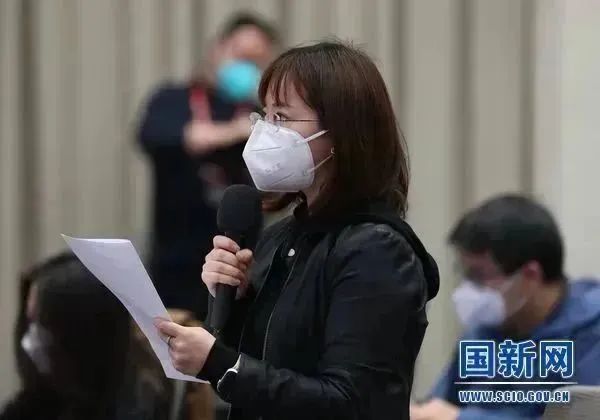
Questions from Science and Technology Daily reporters (photo by Liu Jian)
We know that the protection and inheritance of folk literature and art are very important to the promotion of traditional Chinese culture. My question is: What measures have been taken to promote the protection and promotion of folk literature and art copyright pilots? What results have been achieved?
Shen Changyu:
Thank you for your question. This question will be answered by Director Wang of the Copyright Administration Bureau.
Wang Zhicheng:
Thank you, Director Shen. Thanks for asking. As you all know, Article 6 of my country’s Copyright Law stipulates that the copyright protection measures for folk literature and art works shall be separately formulated by the State Council, and the World Intellectual Property Organization is also studying and formulating rules for the protection of folk literature and art (also known as “traditional cultural expressions”) in the field of intellectual property rights. international treaties. The Copyright Administration Bureau of the Propaganda Department of the CPC Central Committee adheres to the linkage between domestic legislation and international promotion of copyright protection for folk literature and art, further activates the value of copyright in the field of folk literature and art, promotes the creative transformation and innovative development of China’s excellent traditional culture, helps China’s excellent traditional culture go global, and enhances the national cultural soft strength and Chinese cultural influence. In 2021, resource-rich Inner Mongolia, Jiangsu, Sichuan and Guizhou were selected to carry out pilot (provincial-level) work on the protection and promotion of folk literature and art copyright. Based on the initial results achieved, in 2022, eight regions were selected to carry out folk literature and art copyright protection and promotion pilot projects (municipal level) in Jincheng, Shanxi, Jiamusi, Heilongjiang, Yangzhou, Jiangsu, Huangshan, Anhui, Fuzhou, Jiangxi, Weifang, Shandong, Chaozhou, Guangdong, and Bijie, Guizhou work.
Each pilot area gives full play to the unique advantages of local folk literature and art resources, actively carries out folk literature and art copyright census and registration work, builds a big data service platform, builds folk literature and art copyright service workstations, strictly supervises and manages, and does a good job in publicity and promotion of folk literature and art copyright protection. For example, Guizhou has established the National Ethnic Folk Culture Copyright Trade Base (Southwest) to give full play to ethnic folk characteristics and promote the flow of folk literature and art copyright resources and the high-quality development of the copyright industry; Weifang, Shandong Province has established the first folk literature and art copyright workstation to provide support for the city's folk literature and art enterprises , units and workers provide services such as copyright registration, copyright transactions, rights protection consultation, exchange and cooperation, guide them to establish and improve the folk literature and art copyright work management mechanism, and design and produce a short public welfare video of "Copyright Protects the Inheritance and Development of Folk Literature and Art" to inform everyone The voice of Weifang conveys culture; Anhui Huangshan holds a folk literature and art copyright protection and promotion forum; Heilongjiang Jiamusi will hold a folk literature and art copyright protection forum during the Sino-Russian cultural exchange season.
In the next step, the Copyright Administration Bureau of the Propaganda Department of the CPC Central Committee will guide the pilot areas to continuously improve the awareness of copyright protection of folk literature and art, actively explore and innovate copyright work formats, models, and mechanisms in the field of folk literature and art, and strengthen the creation, use, protection, management, and services of folk literature and art copyright. Provide practical support and basis for domestic legislation on folk literature and art copyright and the formulation of international treaties, contribute new ideas and open up new patterns in promoting the creative transformation and innovative development of China's excellent traditional culture; further promote international dialogue and exchanges on folk literature and art copyright, and help China's excellent traditional culture Culture goes global to enhance the country’s cultural soft power and Chinese cultural influence.
Thanks.
China Central Radio and Television Station Voice of China reporter:
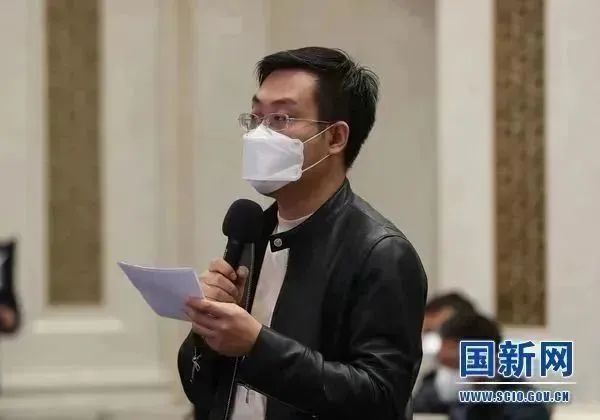
Questions from a reporter from China Central Radio and Television Station’s Voice of China (photo by Liu Jian)
General Secretary Xi Jinping has repeatedly emphasized the need to promote the transformation of Chinese products into Chinese brands. Trademarks are also an important carrier for brand protection and construction. What achievements have been made in strengthening trademark and brand building in recent years? In terms of improving the value of the product brand, what are the next steps to consider? Thanks.
Hu Wenhui:
Thank you for your question. Trademarks and brands are a comprehensive reflection of the competitiveness of enterprises, regions and even countries, and are important resources for participating in global competition. In recent years, the State Intellectual Property Office has focused on the entire process and chain of trademark and brand protection to create a good environment for trademark and brand development in an all-round way.
The first is to strengthen policy guidance. Formulate the "Thousands of Enterprises and Hundreds of Cities" Trademark and Brand Value Enhancement Action Plan, deploy and carry out three special actions to enhance corporate trademark and brand value, create trademark and brand advantage areas, and trademark and brand construction service guidance, and accelerate the establishment and improvement of a trademark and brand cultivation and evaluation system. Efforts will be made to increase the market value of “Thousands of Enterprises with Thousands of Standards” and “Hundreds of Enterprises in One Hundred Cities”.
The second is to strengthen source protection. Comprehensively deepen the reform of trademark registration, and the average review period for trademark registration will be stable within 4 months. Strictly crack down on malicious trademark registrations, especially those involving famous brands and free riding. In the past year, a total of 372,000 malicious trademark registrations were cracked down on.
The third is to improve service levels. Madrid's international trademark registration business has been fully electronic, and some Chinese characteristic commodity items have been added to the World Intellectual Property Organization's Nice Classified Goods Database, which greatly facilitates the overseas layout of Chinese applicants' trademarks. The number of international trademark registration applications in Madrid has ranked third in the world for many consecutive years.
The fourth is to increase publicity and promotion. Continue to promote Chinese trademarks and brands through event platforms such as China Brand Day, China International Import Expo, and China International Trademark and Brand Festival. Organize the selection, sharing and promotion of more than 100 excellent trademark and brand building cases across the country to enhance the overall development level of trademark brands.
The fifth is to carry out comprehensive evaluation. Guide the compilation of the China Trademark and Brand Development Index and conduct a comprehensive evaluation of the development level of trademarks and brands across the country. Relevant studies show that the development of trademarks and brands in my country is showing a steady growth trend. Provinces with strong economies have outstanding trademark and brand development advantages. Northeastern and central and western provinces have made significant progress in brand potential development and service environment optimization.
Sixth, cultivate industrial clusters. Cooperate with local governments to create and promote regional brands, and so far 284 collective certification trademarks for regional brands at or above the county level have been registered. These regional brands approved and registered in accordance with the law have distinctive characteristics, strong competitiveness and good market reputation, and have played a significant role in supporting the development of characteristic economies.
In the next step, we will continue to implement the trademark and brand strategy in depth, provide better service supply for the construction and development of trademark brands, and strive to enhance the influence of Chinese trademark brands. Thanks.
Reporter from Hong Kong Bauhinia Magazine:
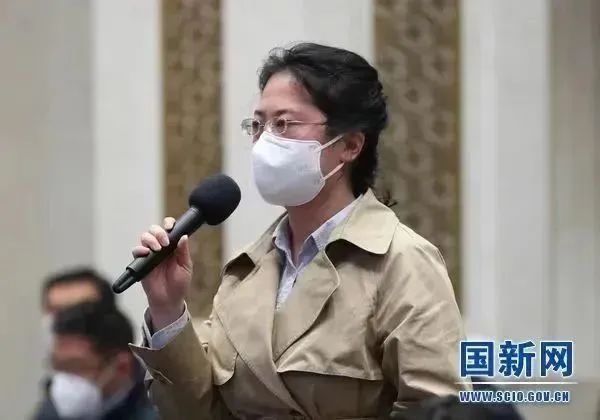
Questions from a reporter from Hong Kong Bauhinia Magazine (photo by Liu Jian)
In the past few years, our country's innovative achievements in the fields of manned spaceflight, lunar and fire exploration, and supercomputers have continued to emerge. More and more major countries with independent intellectual property rights have important equipment. How does the State Intellectual Property Office serve key areas, scientific and technological research, and What work has been done to help science and technology become independent and self-reliant, and what other plans are there for the future? Thanks.
Shen Changyu:
In the ten years of the new era, my country's independent innovation achievements have continued to emerge, and scientific and technological self-reliance and self-reliance have accelerated. my country ranks 11th in the "Global Innovation Index Report 2022" released by the World Intellectual Property Organization, improving steadily for 10 consecutive years and ranking first among middle-income economies. Scientific and technological innovation has opened up new fields and new tracks for my country's economic development, greatly improving the quality and efficiency of development. The State Intellectual Property Office has thoroughly studied and implemented the spirit of General Secretary Xi Jinping’s important instructions on intellectual property work, and has always regarded serving scientific and technological innovation as an important task, providing support from multiple aspects such as review and authorization, legal protection, achievement transformation, and service guarantee.
The first is to promote the creation of intellectual property rights. Implement patent quality improvement projects, increase patent review support for key industries, and support the efficient obtaining of patents for major scientific research project results. In response to the patent layout needs of key core technologies of innovative entities, services such as priority review, centralized review, and delayed review are provided to improve the quality and efficiency of patent layout. Focusing on technical fields such as chips, new energy, biomedicine, and seed industries, intellectual property specialists are selected for central enterprises, universities, and scientific research institutions to serve the entire process of scientific and technological innovation at close range.
The second is to strengthen intellectual property protection. Strengthen the construction and layout of national intellectual property protection centers, and provide "one-stop" intellectual property administrative protection services integrating rapid pre-examination, rapid confirmation of rights, and rapid rights protection for provincial and municipal advantageous industries. Continue to strengthen the construction of overseas intellectual property dispute response guidance mechanisms, establish overseas intellectual property dispute response guidance centers and local sub-centers across the country, and actively carry out overseas intellectual property risk monitoring and early warning to help enterprises prevent overseas intellectual property risks and respond to overseas intellectual property disputes.
The third is to deepen patent navigation decision-making support. Cultivate 26 patent navigation engineering support service institutions, layout and build 104 industrial patent navigation service bases, organize and carry out in-depth patent mining and analysis around key areas and cutting-edge technologies, study and judge industry chain risks, and build 13 national key industrial patents such as chips and rare earths The information service platform provides direction guidance for technological innovation to find technological breakthroughs and optimize technological research and development plans.
The fourth is to promote the transformation and application of intellectual property rights. Build intellectual property operation centers for key industries such as new energy and 5G, and guide social funds to participate in scientific and technological innovation in key core technology fields. Support relevant scientific research institutes to establish intellectual property operation agencies, and organize member companies to create a "patent pool" for collective development. Encourage the development of intellectual property pledge financing and insurance business in key areas, effectively expand financing channels for innovative entities, and solve financing problems.
At present, a new round of scientific and technological revolution and industrial transformation are accelerating. In the fierce international competition, we will focus on high-level scientific and technological self-reliance and self-reliance, further improve patent examination policies oriented to national needs and user satisfaction, improve examination quality and efficiency, and make Obtaining rights is more convenient and rights are more stable. At the same time, we will solidly carry out intellectual property rights promotion to "strengthen the chain" and "protect the chain", promote the deep integration of the patent chain with the industrial chain, innovation chain, capital chain, and talent chain, and promote intellectual property rights throughout scientific research and development, technology transfer, commercial transformation, and benefit distribution. The entire chain promotes and improves the resilience and security of the industrial chain and supply chain. Thanks.
Beijing News reporter:
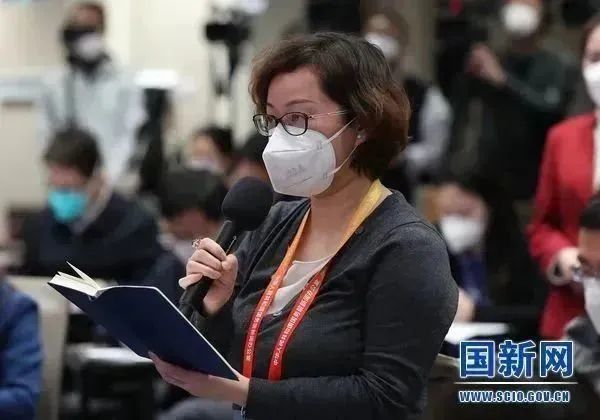
Questions from Beijing News reporters (Photo by Liu Jian)
For some time, some publishing units have reported that some e-commerce platforms have continued to spread pirated textbooks, teaching aids, children's books and other infringing and illegal activities online, disrupting the copyright order of the publication market and endangering the physical and mental health of young people. What measures are being taken in this regard? What work has been carried out? What was the result? Thanks.
Shen Changyu:
I would like to ask Director Wang from the Copyright Administration Bureau to answer this question.
Wang Zhicheng:
Thank you, Director Shen. Thank you for your question. On March 18, 2019, General Secretary Xi Jinping emphasized at the school’s ideological and political theory course teachers’ symposium that “the adolescent stage is the ‘jointing and booting period’ of life” and “needs careful guidance and cultivation”. Protecting the physical and mental health of young people is the common responsibility of the entire society. From February to October 2022, the Copyright Administration Bureau of the Central Propaganda Department will work with the Printing and Distribution Bureau of the Central Propaganda Department, the National Anti-Pornography and Anti-Illegal Affairs Office, the Food and Drug Crime Investigation Bureau of the Ministry of Public Security, the Teaching Materials Bureau of the Ministry of Education, and the Cultural Market Comprehensive Law Enforcement of the Ministry of Culture and Tourism The Supervision Bureau jointly launched the Youth Copyright Protection Season Action, focusing on rectifying the infringement and piracy issues that have strongly harmed the rights and interests of teenagers reported by rights holders and parents, striving to standardize the copyright order of publications sold on e-commerce platforms, and focusing on cracking down on piracy, illegal sales, and online dissemination. Illegal and criminal acts such as infringing and piracy of teaching materials and teaching aids, best-selling children's picture books.
First, focus on key areas and carefully deploy special actions. Youth copyright protection season actions are carefully organized and deployed in various places. Guangdong, Hainan, Jiangxi and other places have included special actions in annual key tasks, and Yunnan has included special actions in the protection of minors to promote. At the same time, publicity and education should be strengthened, intellectual property protection should be included in the "first lesson of school", and educational guidance on copyright protection for young people should be strengthened.
The second is to strengthen inspections and investigation and vigorously strengthen active supervision. On the one hand, copyright, public security, education, culture and tourism, press and publication, cultural law enforcement and other departments have formed a special action inspection team to strengthen inspections of the local publication market, printing companies, bookstores around campus, newsstands, and stationery stores during the winter, summer, and school seasons. , typing and copy shops and other key places, as well as source companies such as copy companies around the campus. On the other hand, we will strengthen online supervision, conduct online inspections of relevant websites, e-commerce platforms, WeChat public accounts, etc., discover clues in a timely manner, and make every effort to expand the sources of cases.
The third is to investigate and deal with major and important cases and strengthen platform responsibility. A number of major and important cases have been investigated and handled strictly and quickly in various places in accordance with the law, and those suspected of constituting crimes are promptly transferred to the public security organs for investigation of criminal responsibility in accordance with the law. At the same time, multiple departments were organized to jointly interview some online e-commerce platforms, instructing them to strictly implement their main responsibilities, strengthen the disposal and management of stores that repeatedly infringe, establish and improve green channels for rights holders to organize rights protection, and joint punishment mechanisms for problematic online stores, and further optimize the "Notice" —Delete” disposal process and infringement quick processing mechanism.
During the special operation, copyright law enforcement departments at all levels dispatched 369,000 law enforcement officers to inspect more than 230,000 publications markets, printing companies and bookstores, newsstands, stationery stores, typing and copy shops and other places around campus to investigate infringement and piracy. There were 601 cases regarding teaching materials, teaching aids and children's books, 75 major cases were transferred to judicial organs, and 2,158 illegal online bookstores were cancelled.
This year, we will continue to carry out the Youth Copyright Protection Season action to further protect the physical and mental health of young people.
Thanks.
Economic Daily reporter:
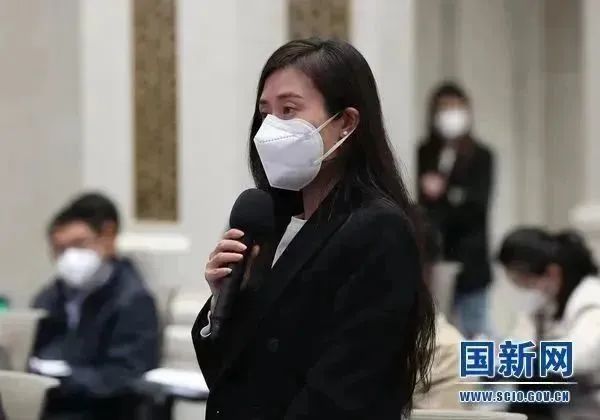
Economic Daily reporter asked a question (photo by Liu Jian)
We have noticed that the 20th National Congress of the Communist Party of China clearly stated that it is necessary to strengthen the legal protection of intellectual property rights and form a basic system to support comprehensive innovation. What work have we done in this regard? What are the next steps? Thanks.
Shen Changyu:
Thank you for your question. Intellectual property rights are not only important technological supplies, but also important institutional supplies. Whether a region has strong innovation capabilities or not, intellectual property is an important factor; whether the business environment is good or not, intellectual property is a key indicator.
Since the 18th National Congress of the Communist Party of China, my country's intellectual property legal construction has achieved fruitful results. On the one hand, we have established an intellectual property legal system that is in line with internationally accepted rules and has a relatively complete range of categories. The Civil Code has established important legal principles for the protection of intellectual property rights in accordance with the law. The patent law, trademark law, and copyright law have been revised successively, establishing high international standards. system of punitive damages for infringement. At the same time, it has joined almost all major international intellectual property treaties, and last year the Hague Agreement and the Marrakesh Treaty also officially entered into force in China. On the other hand, through institutional reform, we have achieved centralized and unified management of patents, trademarks, geographical indications, and integrated circuit layout designs, and the integrity, systematization, and collaboration of intellectual property work have been significantly enhanced.
Next, we will thoroughly study and implement the spirit of General Secretary Xi Jinping’s important instructions on intellectual property work, and coordinate efforts in accordance with the deployment requirements of “strengthening the legal protection of intellectual property rights and forming a basic system to support comprehensive innovation” emphasized in the report of the 20th National Congress of the Communist Party of China. Promote the formulation and revision of various intellectual property laws, regulations and institutional rules.
First, accelerate the completion of the revision of the Implementing Rules of the Patent Law, promote the implementation of new revisions such as patent open licensing, utility model obvious inventive step review, and design obvious difference review, actively promote the reform of the utility model system, and do a good job in review management after my country joins the Hague Agreement. , fully integrated into the global design system. The second is to speed up a new round of arguments for amending the Trademark Law and focus on solving deep-seated contradictions and problems such as malicious registration and large-scale hoarding in the field of trademarks. The third is to amend and improve the regulations on the protection of layout designs of integrated circuits to adapt to the needs of the development of large-scale integrated circuits, help the chip industry become bigger and stronger, and serve the better development of the digital economy. The fourth is to speed up special legislation on geographical indications, coordinate the two models of special protection of geographical indications and trademark protection, formulate an implementation plan for the unified recognition of geographical indications, realize unified entrance and unified export of geographical indications, and better utilize geographical indications in promoting the development of characteristic industries and rural areas. revitalization and cultural heritage. The fifth is to strengthen research on intellectual property rules for new fields and new business formats such as big data, artificial intelligence, and genetic technology to help innovative development in related fields. At the same time, we actively participate in the formulation of international rules on intellectual property rights, better align with high-standard international economic and trade rules, and promote high-level opening up to the outside world. Thanks.
Reporter from China Intellectual Property News:
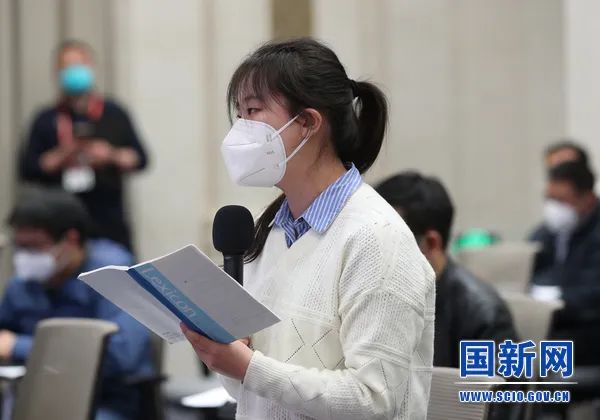
China Intellectual Property News reporter asked questions (Photo by Liu Jian)
This year marks the tenth anniversary of the joint construction of the “Belt and Road” initiative. What important progress has been made in intellectual property exchanges and cooperation between China and the countries jointly building the “Belt and Road” in the past ten years? Thanks.
Shen Changyu:
Thank you for your question. This year marks the 10th anniversary of the joint construction of the “Belt and Road” initiative proposed by General Secretary Xi Jinping. Over the past ten years, China has continued to expand its opening up to the outside world and shared development results with countries co-building the "Belt and Road". The number of patent applications from countries co-building the "Belt and Road" has steadily increased, and multilateral and bilateral exchanges and cooperation have steadily advanced.
In the past ten years, a total of 115 countries co-building the "Belt and Road" have applied for patents in China, with a total of 253,000 patent applications, an average annual growth of 5.6%. China's patent applications in countries co-building the "Belt and Road" are also growing simultaneously. Data show that in 2022, the number of patent applications published by Chinese companies in the countries co-building the "Belt and Road" will reach 12,000, a year-on-year increase of 16.4%. Among them, the number of applications disclosed in the three technical fields of motors, electrical devices, electric energy, pharmaceuticals, materials, and metallurgy increased the fastest year-on-year, with an increase of more than 70%. The continued activity of patent applications demonstrates the vitality of the Belt and Road Initiative.
Over the past ten years, the State Intellectual Property Office has in-depth promoted cooperation with jointly established national intellectual property management institutions. In 2016 and 2018, in conjunction with the World Intellectual Property Organization and the National Copyright Administration and other departments, we held two high-level conferences on “Belt and Road” intellectual property, and General Secretary Xi Jinping sent a letter of congratulations. Guided by the spirit of the General Secretary’s important instructions, we have solidly promoted a series of cooperation projects with co-building countries such as legal policy exchanges, master’s degree education, intellectual property awareness enhancement, and the dispatch of intellectual property experts in accordance with relevant cooperation frameworks, and have achieved great results. Important results.
Over the past ten years, more and more “China solutions” for intellectual property rights have received support and response from countries co-building the “Belt and Road”. Up to now, the State Intellectual Property Office has signed cooperation agreements with 56 jointly established national intellectual property management agencies. Invention patents authorized by China can be registered and validated directly in Cambodia, and Laos recognizes the review results of Chinese invention patents. The State Intellectual Property Office has also increased its intellectual property informatization cooperation with countries co-building the “Belt and Road”, providing “Cloud Patent Examination” system accounts to nearly 30 countries to promote intellectual property information exchange and business sharing between countries.
In the next step, we will further study and implement Xi Jinping Thought on Diplomacy, deepen intellectual property exchanges with countries co-building the “Belt and Road”, jointly build a road of innovation, better benefit people of all countries, and create an intellectual property practice for co-building the “Belt and Road” sample. Thanks.
Xing Huina:
That concludes today’s press conference. I would like to thank Director Shen and several publishers, as well as all friends from the media. Goodbye everyone!
(Source: Guoxin.com)
More intellectual property information and services
Follow the official subscription account of [Shenxin Intellectual Property] on the code

More Census dynamic news, important data/reports/cases in the intellectual property industry, etc.
Follow the official service account of [Shentrust Intellectual Property Service Platform] on the code

相关新闻
Telephone:
Telephone:+86-755-82566227、82566717、13751089600
Head Office:13 / F, Building 14, Longhua Science and Technology Innovation Center (Mission Hills), No. 8 Golf Avenue, Guanlan Street, Longhua District, Shenzhen
Head Office:
13 / F, Building 14, Longhua Science and Technology Innovation Center (Mission Hills), No. 8 Golf Avenue, Guanlan Street, Longhua District, Shenzhen
Subsidiary Company:2808, Block B2, Yuexiu Xinghui Junbo, No.18 Tazihu East Road, Jiangan District, Wuhan City, Hubei Province
Subsidiary Company:
2808, Block B2, Yuexiu Xinghui Junbo, No.18 Tazihu East Road, Jiangan District, Wuhan City, Hubei Province

Service Number

Subscription Number
Copyright ©2016 Shenzhen Shenkexin patent Agency Co., LTD All rights reserved | 粤ICP备2021174526号
Copyright ©2016 深圳市深可信专利代理有限公司 版权所有 | 粤ICP备2021174526号 SEO标签
Copyright ©2016 深圳市深可信专利代理有限公司 版权所有